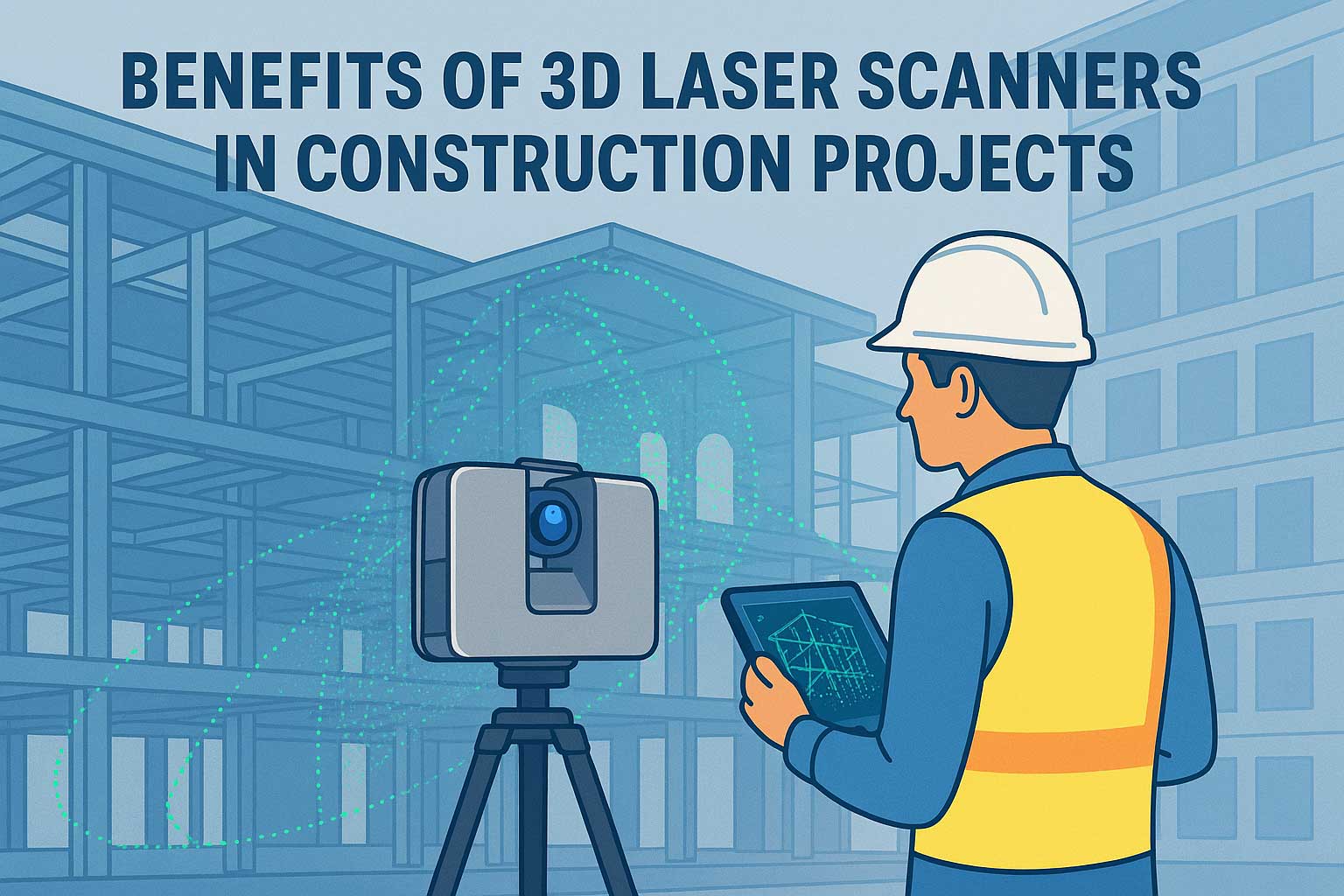Learn key benefits and real-world applications of Using 3D Laser Scanners in Construction Projects. Discover how 3D laser scanners improve accuracy, reduce errors, and enhance efficiency in construction projects.

1. Enhanced Accuracy and Precision
3D laser scanners capture millions of data points in just seconds, providing highly accurate measurements of existing structures, terrain, and installations. This reduces human error and ensures that every millimeter counts—critical for large-scale or high-value projects.
2. Faster Data Collection
Traditional surveying methods can take hours or days to collect data from a job site. With laser scanning, large areas can be scanned and documented in minutes, significantly speeding up the design and validation process.
3. As-Built Documentation
Laser scanners provide detailed as-built models, allowing you to compare design plans with actual site conditions. This is especially useful during renovations, retrofits, and complex installations where accuracy is vital.
The point cloud data can be easily imported into BIM platforms for clash detection and design validation.
4. Improved Communication and Collaboration
When stakeholders across engineering, design, and construction have access to the same 3D models, it leads to better decision-making. Visualization tools derived from laser scans make it easier to explain issues, track progress, and align teams remotely.
5. Reduced Rework and Construction Delays
Misalignments or inaccurate measurements often lead to costly rework. With laser scanning, you get real-time validation of your work, which helps detect errors before they escalate—saving both time and budget.
6. Safety and Remote Access
3D laser scanners can collect data in dangerous or hard-to-reach areas without putting workers at risk. This is especially valuable in high-rise buildings, confined spaces, or hazardous environments.
7. Lifecycle Asset Management
The data from 3D scans can be archived and reused throughout the asset’s lifecycle—for facility management, inspections, or future upgrades. It adds long-term value beyond the construction phase.
Use Cases in Real Construction Projects
- Capturing structural elements before installation of MEP systems
- Validating foundation levels and column positions
- Creating accurate site models for prefabrication
- Post-construction documentation for owners and clients
Ready to Integrate 3D Scanning Into Your Projects?
If you’re working on a construction project, 3D laser scanning can give you a competitive edge. Learn more in our guide to 3D scanning in construction or explore recommended scanners at this trusted equipment source.

Leave a Reply